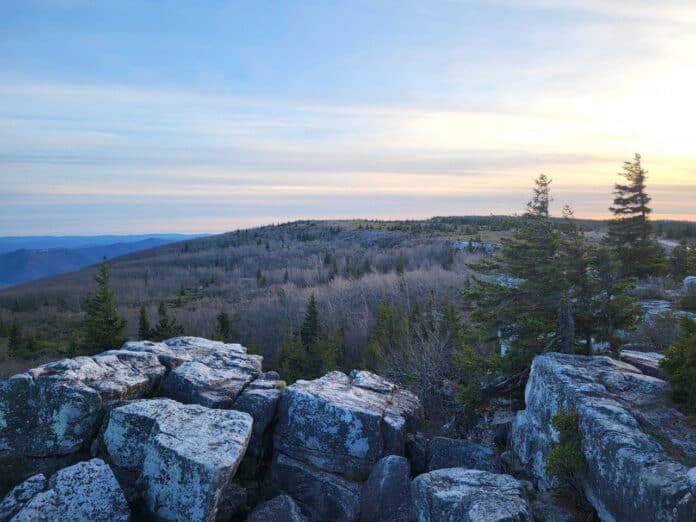Virginia Tech’s College of Natural Resources and Environment will lead a $2 million project to restore red spruce forests across the Central Appalachian Highlands. The work is funded by the National Fish and Wildlife Foundation.
The four-year effort aims to accelerate restoration of high-elevation red spruce forests in Virginia, West Virginia, and Maryland and is a collaboration among the U.S. Forest Service, U.S. Fish and Wildlife Service, Virginia Department of Wildlife Resources, Virginia Department of Forestry, West Virginia Division of Forestry, The Nature Conservancy, and the Appalachian Conservation Corps.
These forests, which scientists consider globally rare, once played a vital role in carbon storage, water retention, regulating microclimates and maintaining biodiversity, a critical component for tourism. Many were severely degraded from exploitative harvesting and wildfire a century ago and have been slow to recover.
The project will entail restoring forest habitat condition and extent, developing an ecological restoration workforce capacity, monitoring and evaluating restoration methods, refining best practices, and engaging with local communities.
On-the-ground actions will involve red spruce release, spruce planting, and headwater stream restoration in ecologically important areas of the Allegheny Highlands.
“This work literally has been 30 years in the making and finally all the pieces are set to engage in forest restoration at scale that will have a positive impact on forest condition and health for decades to come,” said Mark Ford, associate professor in the Department of Fish and Wildlife Conservation and the co-principal investigator of the project.

The project builds on years of collaboration among the region’s universities, government agencies, and nonprofit partners. The goal is to reconnect red spruce habitats, create corridors for species migration, and improve the overall health of forest and aquatic ecosystems.
“This project would not have been possible without the dedication of our incredible partners,” said Corey Green, assistant professor in the Department of Forest Resources and Environmental Conservation and co-principal investigator on the project alongside Ford and Scott Klopfer of the Conservation Management Institute. “Their years of experience working in these environments will result in a project that benefits not only the iconic red spruce forests, but also the local communities that call this region home.”
Project locations include:
- Garrett County in Maryland
- Giles, Grayson, Highland, Russell, and Tazewell counties in Virginia
- Greenbrier, Nicholas, Pendleton, Pocahontas, Randolph, Tucker, and Webster counties in West Virginia
Researchers will assess current and past restoration efforts and use adaptive management strategies to expand the impact of this work across the region.
The stage was set for this effort in part from existing red spruce ecology and endangered northern flying squirrel projects being conducted by college researchers Abigail McKellips, Katherine Gorman and Jesse De La Cruz, in addition to Ford and Green, in North Carolina, Virginia, and West Virginia that provided critical background data to move forward with hands-on active forest management.
By Max Esterhuizen


